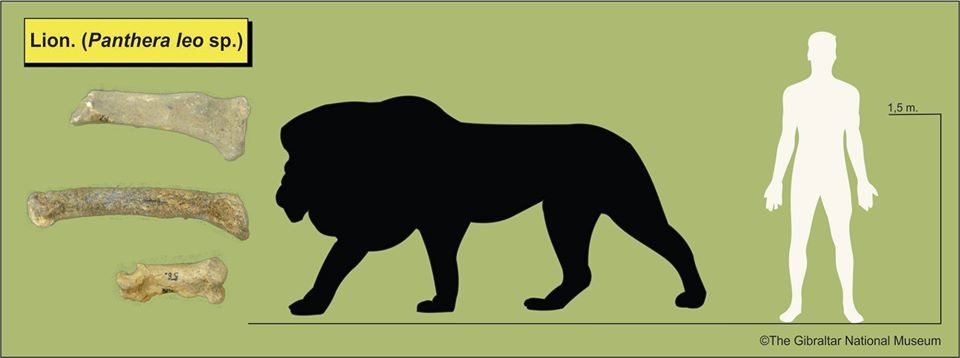Lions (Panthera leo sp.)
Lions (Panthera leo sp.)
Remains are scarce, but the presence of lions (Panthera leo sp.) has been recorded in Upper Pleistocene levels during the Neanderthal occupation of Gorham’s Cave (in the Middle Palaeolithic, 126,000-32,000 years ago).
Today we bring you two metacarpals and a phalange (part of a paw and digits) of an average-sized lion from Gibraltar. Lions are big cats, and the Pleistocene lion, Panthera leo fossilis, had a vast range from Africa through southern Eurasia, including the Iberian Peninsula and the British Isles during the Middle Pleistocene (720,000-126,000 years ago). There is still a remnant population of Asiatic lions in India of the subspecies now called Panthera leo leo (formerly Panthera leo persica). This is an endangered species.
The most common species of lion in Europe during the Middle Palaeolithic was the cave lion (Panthera spelaea), although the remains found in Gibraltar seem to have belonged to a smaller animal than this and perhaps belonged to the subspecies Panthera leo europaea, typical of southern Europe during the Upper Pleistocene. Like other big cats such as the leopard (Panthera pardus), the lion would have found a favourable habitat outside the caves (in the area now submerged by the sea) for hunting and mating. The Neanderthals would have been the only major competitors they would have encountered, but they would have actively avoided each other.

Published: May 27, 2020
Other similar VM - Paleontology
VM - Paleontology
palaeontology rosia bay and the beginnings of life and earth sciences
Published: April 06, 2020
Virtual Museum VM - Paleontology
A metapodial fragment belonging to an Aurochs
Published: June 28, 2020
18-20 Bomb House Lane
PO Box 939,
Gibraltar
